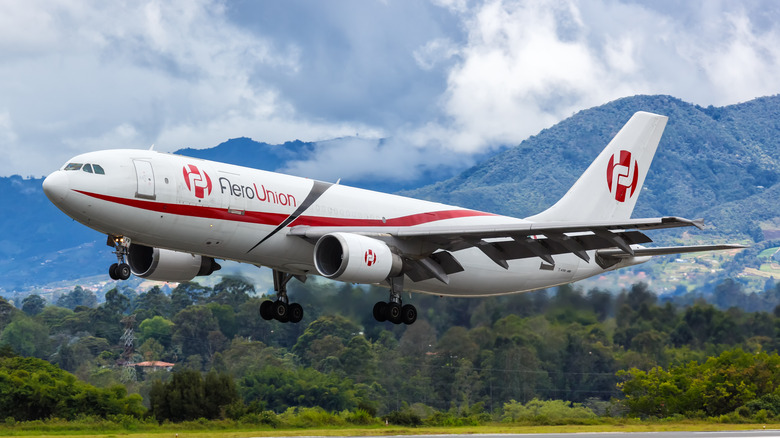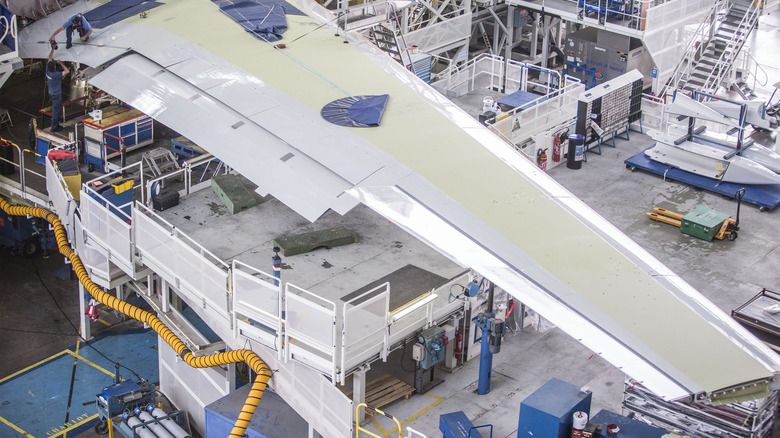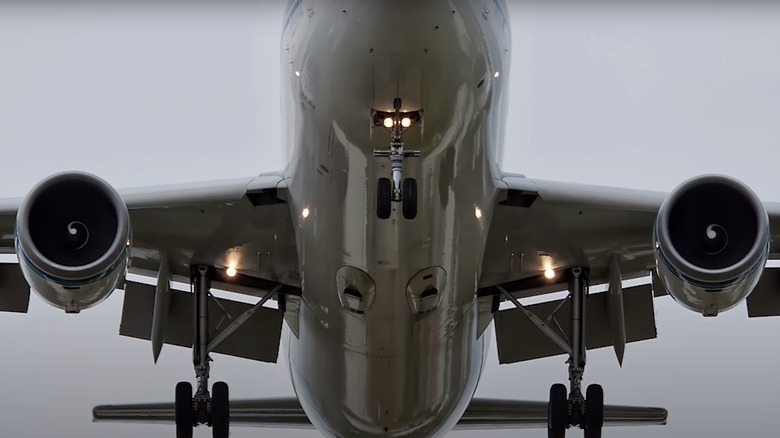Everything To Know About The Airbus A300
The first Airbus A300 transformed and accelerated air travel worldwide. Its creation was a challenging feat that required cooperation across continents to come to fruition. During the 1960s, the U.S. was at the cutting edge of passenger flight, particularly compared to European competitors. The European aerospace industry of the time was fragmented, with most manufacturers doing business solely within the borders of their home countries. The Airbus A300 would change that, bringing innovation and new partnerships to the world of aviation.
One of the fundamental imperatives of any business is growth. In the 1960s, European airlines made that literal: They needed a bigger plane. The U.S. had models like the Lockheed L-1011 TriStar 500, which could hold up to 230 passengers. Europe needed something even larger to disrupt America's firm grip on the industry. The United Kingdom, Germany, and France joined forces to craft the first Airbus A300, splitting design and construction responsibilities between them. The result was the A300 and its descendants, which rank with the most successful commercial airplanes of all time. The Airbus A350 jet is still considered one of the best planes for long flights.
What made the Airbus A300 special?
With the Airbus A300, some interesting departures from U.S.-designed aircraft immediately stood out. Instead of the typical three-engine composition common in the 60s, the A300 only had two jet engines, one underneath each wing. While this gave less thrust than the A300's competitors, it also made the plane much lighter, offering more efficiency during travel.
Another difference between the A300 and its rivals was a wider fuselage, with engineers repositioning the passenger cabin floor to accommodate cargo underneath. With the ability to transport both people and cargo, the Airbus A300 enhanced the airline's earning ability with each flight. The wider fuselage also enabled a greater passenger capacity of up to 266 people versus the Lockheed TriStar 500's 230. Even the much larger McDonnell-Douglas DC-10-30 could only transport 250 people safely, so the Airbus A300 was quite a step forward. If you think that's impressive, the later-developed Airbus A380 was the largest passenger aircraft to date, carrying up to 555 passengers.
A technological first that advanced air travel
The Airbus A300 made several innovations during its construction, many of which still shape aerospace design today. One of these advances was the use of lighter materials, such as strengthened fiberglass, in areas like the front and rear wing edges. Aircraft today still use fiberglass and other composite materials strategically placed within the design to help reduce overall weight. The move away from heavier all-steel and aluminum construction signaled a leap forward in efficiency.
Before the Airbus A300, the cockpit of most passenger jets was much larger because it included a pilot, co-pilot, and flight engineer. The flight engineer's job was to help monitor the complex wall of instruments behind the pilots. Airbus redesigned the cockpit to allow pilots to view multiple flight instruments from a central hub on the front panel, reducing the need for a third crew member. The Airbus A300 has been flying for over 50 years and, per Simple Flying, still had approximately 157 units in operation as of October 2023.


